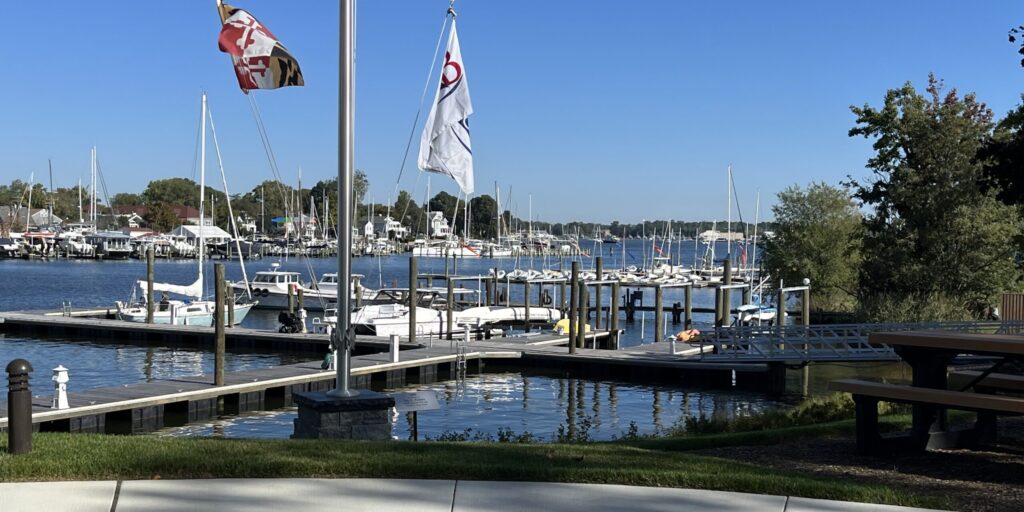
Will New Federal Funding Make Public Transit More Accessible?
By Susan Johnston Taylor | Saturday, October 29, 2022
Anyone who has tried to navigate public transportation with mobility limitations has probably faced a myriad of obstacles: broken elevators, buses that can’t fit a wheelchair or walker, inaccessible bathrooms.
Levels of accessibility can vary depending on the station or the system. Many transit systems were designed before 1990, when the Americans with Disabilities Act (ADA) was signed into law. In fact, the Federal Transit Administration reports that more than 900 of these legacy stations are not fully accessible — about 25% of all rail stations.

Michael Lewis encourages individuals to advocate for local transit authorities to apply for federal grants to improve accessibility.
Why do these accessibility issues still exist more than 30 years after the ADA became law? “A lot of it is money, and some of it is lack of awareness and lack of prioritization,” says Michael Lewis, MDA’s director of disability policy. “Most people don’t think about it unless they have a disability.”
Accessibility challenges persist
Michael lives with cerebral palsy, which affects mobility. He remembers that while he was a college student in Washington, DC, there were many times that the escalators in the DC Metro stations weren’t working, and he had to walk down them. “Some of the escalators down into the stations are very, very long,” he says. “That’s a big obstacle to getting around.” In addition to affecting individuals with disabilities, these scenarios have implications for people who have temporary injuries and our aging population.
A few years ago, Maryland, Virginia, the District of Columbia, and the federal government provided funds to overhaul the DC Metro and ensure that escalators and elevators are available to those who need them.
“Based on personal experience, the maintenance of the Metro is much better than it used to be, say 10 or 12 years ago,” Michael says.
Federal dollars target accessibility
The issues Michael encountered on the DC Metro years ago persist in many cities across the United States. In an effort to address this, President Biden’s Bipartisan Infrastructure Law offers $1.75 billion in funding to modernize public rail stations and improve transit accessibility. This includes $343 million in a notice of funding availability for fiscal year 2022.
The Infrastructure Law includes the All Stations Accessibility Program, which makes grant money available to public transportation systems and state and local governments operating public transportation systems to repair, modify, retrofit, or relocate stations or facilities. The federal share cannot exceed 80% of the net project cost so “we need state governments and local governments to step up,” Michael says.
The Instructure Law also includes nearly $1 billion in Airport Terminal Grants, which will fund improvements at 85 airports across the United States. “The bathrooms at airports can be poorly designed,” Michael explains. “A lot of them have sharp turns where you cannot see people coming out of the bathroom. That’s a hazard for people with mobility devices.”
Other issues at airports include nonworking elevators or escalators and ramps and walkways that are too narrow for people using mobility devices. The grants aim to address these issues and others.
The role of advocacy
Improving transit accessibility doesn’t just help individuals with disabilities. The lack of reliable or efficient transportation has made it challenging for some people with disabilities to work, so this could help boost the economy and address worker shortages. Improving rail systems also has environmental benefits, like decreasing our dependence on cars and reducing greenhouse gas emissions.
While the new federal funding available for public transportation has the potential to make a big impact on accessibility, local transit systems must apply for the grants that will fund those improvements. Every individual can play a role in encouraging transit authorities to apply for grants and use them for accessibility projects. “Advocates should lobby their local transit governing bodies to make accessibility a priority and apply for the federal funding for these projects,” Michael says.
Next Steps and Useful Resources
- Read Change for the Better to learn how individuals make a difference as advocates in their communities.
- Listen to the Quest Podcast Buses, Trains & Automobiles—Getting from Point A to Point B, and check back for a new podcast featuring a conversation with a US Department of Transportation leader.
- The MDA Resource Center is here to help answer questions and provide resources and support. Call (833) 275-6321 or email ResourceCenter@mdausa.org.
TAGS: Accessible Air Travel, Featured Content, Travel
TYPE: Blog Post
Disclaimer: No content on this site should ever be used as a substitute for direct medical advice from your doctor or other qualified clinician.




